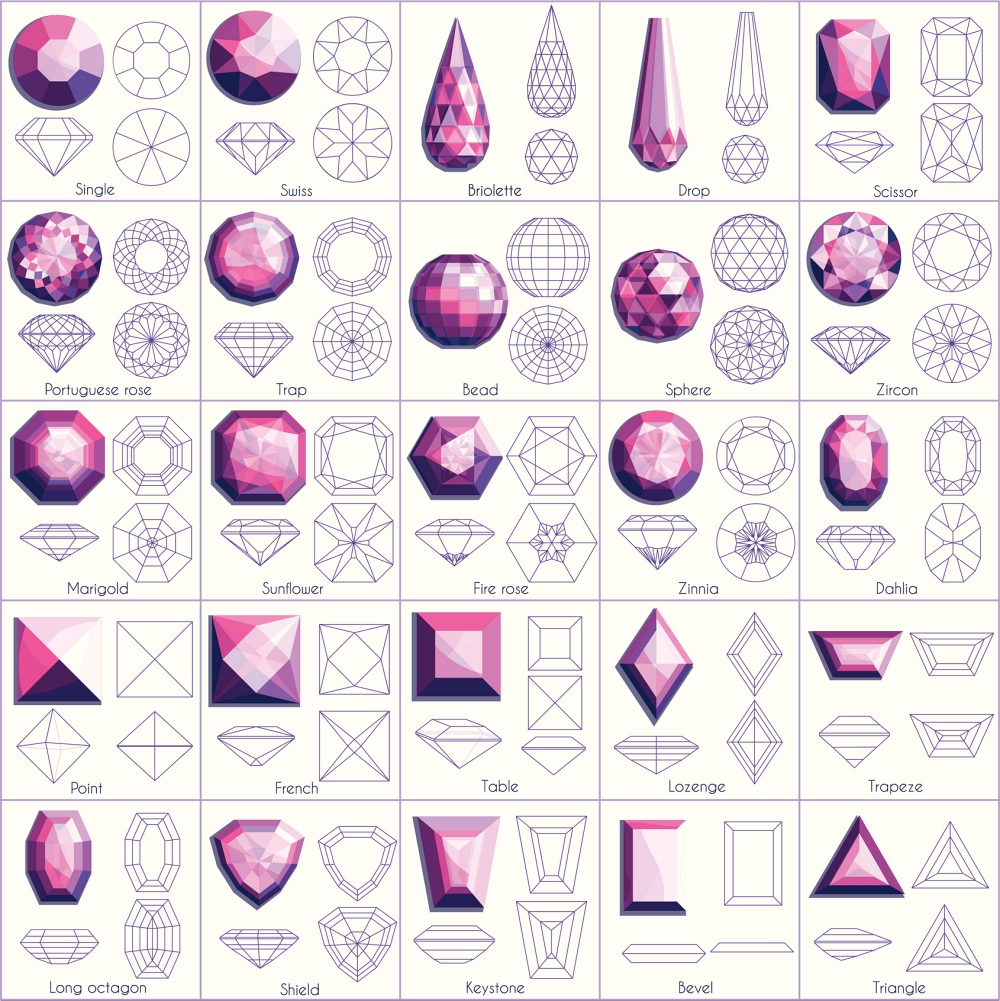So, you know how sometimes you just look at a fancy piece of jewelry and all you can think is ooooooh shiny? Well, what you might not realize is there's actually a lot more going on with those pretty little gemstones than meets the eye. That's why I'm here, folks. To give you all the inside scoop on the different cuts and shapes of gemstones.
What's the difference between a cut and a shape?
Okay, so let's first make sure we're all on the same page here. The shape of a gemstone refers to its physical form - so, round, oval, square, etc. The cut, on the other hand, refers to how the gemstone has been cut and polished to optimize its appearance and light reflection. Got it? Good.
Introduction:
Shapes:
Let's start with the basics: the different shapes of gemstones. There are quite a few, so bear with me here.
Round
Probably the most classic and timeless of all gemstone shapes, a round cut is exactly what it sounds like - a perfect, circular cut. It's actually the most expensive cut to create, because it requires the most raw material to be discarded in the cutting process.
Oval
Similar to the round, but elongated, the oval shape is a great option for those who want the classic look of a round stone but want something a little more unique.
Square
Also known as the princess cut, a square gemstone is a popular choice for engagement rings. It's a more modern shape that's super versatile and looks great in both simple and more complex settings.
Emerald
The emerald cut is a rectangular shape that's characterized by its long, narrow lines. It's not as sparkly as some other cuts, but it's coveted for its sophisticated, understated look.
Heart
As you might imagine, the heart shape is, well, heart-shaped. It's a whimsical and romantic option that's great for more playful pieces or when you want to make a statement.

Marquise
The marquise cut is similar to the oval, but it's pointed at both ends. It's a great option for those who want a more dramatic look but still want the elongated shape of the oval.
Pear
Also known as a teardrop shape, the pear cut is another unique option that's become increasingly popular in recent years. It's great for those who want a little extra sparkle or who want to make a statement.
Cuts:
Now that we've covered the different shapes of gemstones, let's dive into the world of gemstone cuts. There are a lot of different cuts out there, but I'm going to focus on some of the most common ones.
Brilliant
The brilliant cut is probably the most recognizable of all gemstone cuts. It's characterized by multiple facets that radiate from the center of the stone, creating maximum sparkle and shine.

Step
The step cut is characterized by long, narrow facets that run parallel to the stone's edge. It's a great option for those who want a more understated, elegant look.
Mixed
As its name suggests, the mixed cut combines elements of both the brilliant and step cuts. It's a little less sparkly than the brilliant cut, but still has plenty of visual interest and depth.
Cabochon
The cabochon cut is a rounded, polished shape that lacks facets altogether. It's less sparkly than some other cuts, but it's prized for its smooth, almost silky texture.
Rose
The rose cut is characterized by a flat bottom and a faceted, dome-shaped top. It has a vintage, antique look and is a great option for those who want something a little more unique.
About:
So, there you have it - a crash course in the different shapes and cuts of gemstones. But wait, there's more! If you're in the market for some new jewelry and you're not sure what to go for, here are a few things to keep in mind:
Style
At the end of the day, the most important thing is that you love the way your jewelry looks and feels. Consider the style of the piece, and think about whether it complements your personal aesthetic and fashion sense.
Size
Some cuts and shapes may look better on larger or smaller stones, depending on the effect you're going for. Think about the scale of the piece and how it will fit with your body type and overall look.
Setting
The setting of your gemstone can also have a big impact on its overall appearance. Consider whether you want a classic or more modern setting, and think about whether you want additional accent stones, like diamonds or other colored gemstones.
FAQ:
Can a gemstone be both a certain cut and shape?
Yes! In fact, most gemstones are both a specific cut and shape.
Is one cut or shape better than others?
It really depends on your personal taste and what you're looking for. Some cuts may be more popular or classic, but at the end of the day, it's all about what you love.
How can I tell what cut and shape a gemstone is?
Ask your jeweler! They'll be able to tell you exactly what kind of stone you're dealing with and how it's been cut and polished.
Are certain shapes and cuts better for certain types of jewelry?
Again, it depends on what you're looking for. Some cuts might be more traditional for engagement rings, for example, while others might be better suited to a more casual bracelet or necklace.

Conclusion:
So, there you have it, folks - a comprehensive guide to the different cuts and shapes of gemstones. Whether you're in the market for some new jewelry or you just have a newfound appreciation for the art of gemstone cutting, I hope this has been helpful.
And remember - at the end of the day, the most important thing is that you love what you're wearing. So go forth and bling it up, my friends!